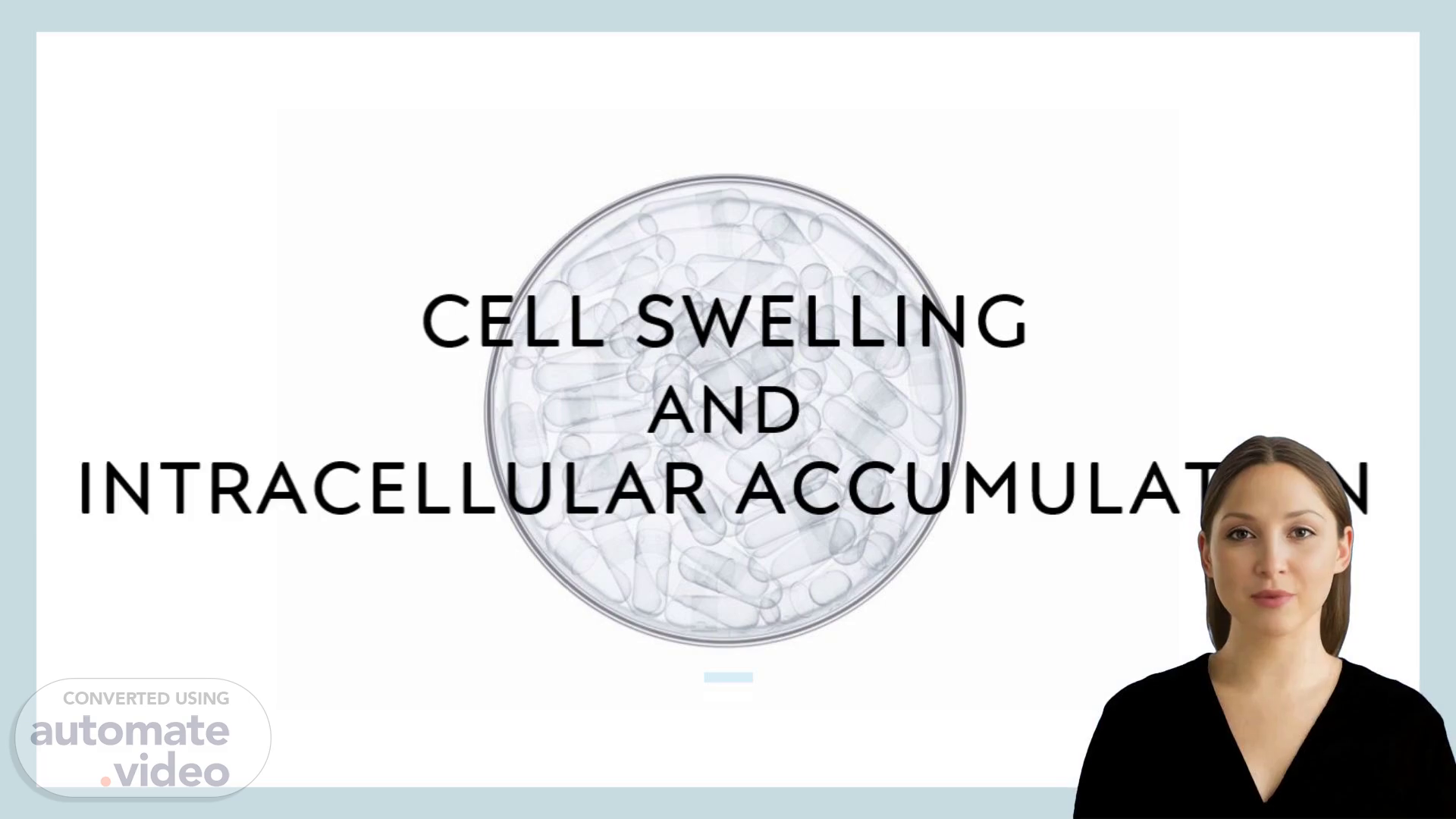
Page 1 (0s)
[Virtual Presenter] Good morning everyone. It is a pleasure to introduce our presentation today. Today we are discussing the fascinating topic of cell swelling and intracellular accumulation. We will be taking a look at the various mechanisms triggers consequences and types of these two phenomena. Our presenter Toshit Tandon has extensively researched this topic to present us the facts and figures. So let's get started..
Page 2 (26s)
[Audio] Cell swelling and intracellular accumulation can both have a major impact on how a cell works. Cell swelling occurs when the osmotic pressure across the cell membrane rises making the cell's volume increase. On the other hand intracellular accumulation takes place when molecules are unable to be moved across the cell membrane resulting in their buildup within the cell. We'll take a closer look at these two phenomena now..
Page 3 (51s)
[Audio] Cell swelling occurs when cells lose their ability to regulate the flow of sodium and potassium which causes a buildup of water. This increase in water causes the cell to swell and can cause injury. To understand and treat cellular injury it is important to understand the causes of cell swelling..
Page 4 (1m 11s)
[Audio] Cell swelling is a condition caused by an imbalance in the influx of sodium and water or the efflux of potassium. This can lead to an increase in cell volume from edema and have an effect on a cell's homeostasis. Therefore it is important to be aware of the mechanisms and triggers of cell swelling in order to maintain the cell's health..
Page 5 (1m 31s)
[Audio] Cell swelling is a phenomenon with potentially serious consequences arising from intracellular hyperosmolarity leading to excessive water uptake. Visibly cells may become clouded or pale as a result of the accumulation of water distorting organelles. If left unchecked the swelling can cause cells to form pockets and eventually lyse. Thus it is essential to be aware of the implications of cell swelling and the methods of preventing it..
Page 6 (2m 1s)
[Audio] Cell swelling and intracellular accumulation are of great significance for cellular health. When excessive amounts of substances accumulate inside cells it may cause dysfunction and damage and eventually lead to various illnesses. To prevent such buildup it is essential to gain proper knowledge of how the substance is broken down transported and removed from the cell. Furthermore necessary precautions should be taken to reduce the intracellular accumulation and maintain the overall well-being of the cell..
Page 7 (2m 35s)
[Audio] Cell swelling and intracellular accumulation is an area of growing interest. This presentation will focus on three aspects of this phenomenon: lipid accumulation protein aggregates and glycogen storage disorders. Lipid accumulation is being researched for its potential connection to metabolic disorders and organ dysfunction. It is also being studied for its potential pathological impacts. Protein aggregates form within cells and this formation is associated with impaired cell function. Lastly glycogen storage disorders can be studied to enhance our knowledge of cell swelling and intracellular accumulation..
Page 8 (3m 15s)
[image] White DNA structure. Thank you. [image] Bacteria cultured in a petri dish for a laboratory or a scientific investigation.